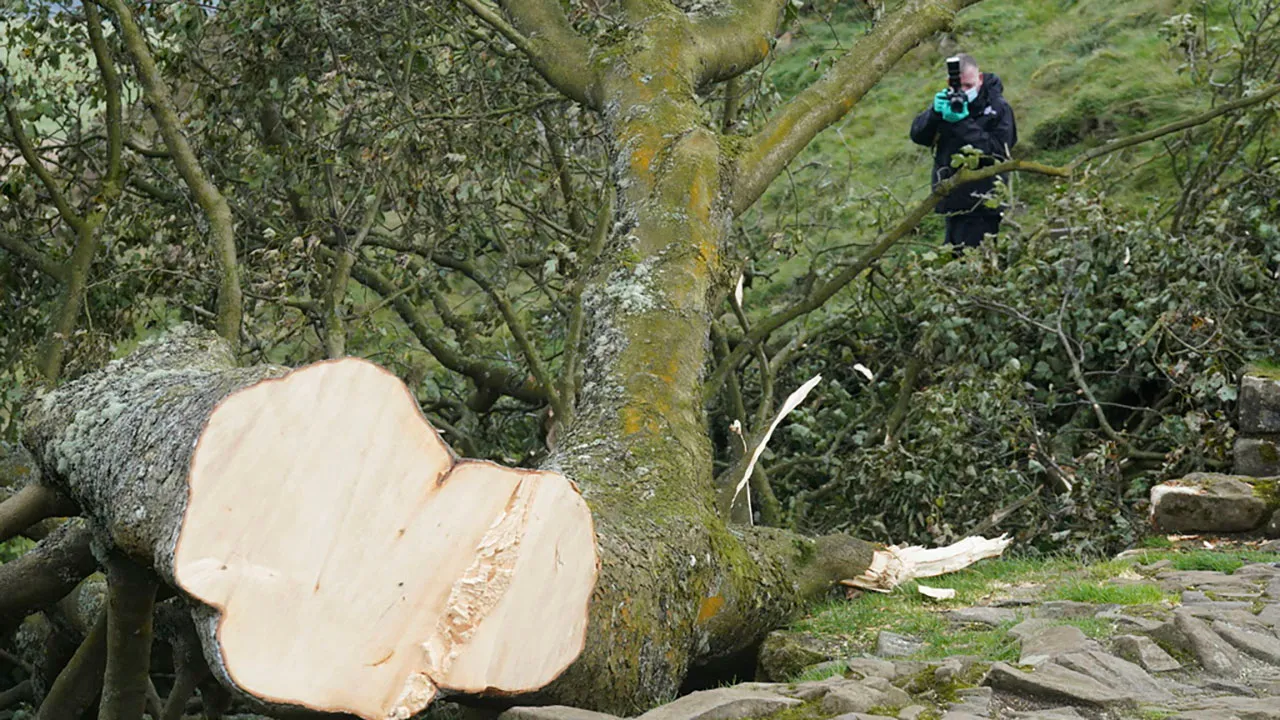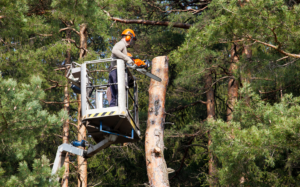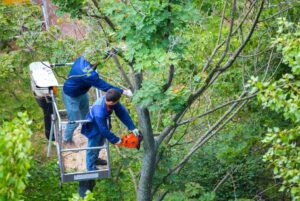Old Damaged Tree Removal: Everything You Need to Know
Trees add beauty, value, and environmental benefits to our properties, but when a tree becomes damaged or diseased, it can become hazardous. Old, damaged trees, especially after storms, may need to be removed to avoid risks to property and safety. In this article, we’ll explore important aspects of old tree removal, including costs, storm damage considerations, cleanup, affordable options, and special programs available to help senior citizens with tree removal.
1. Cost of Tree Removal
Factors Affecting Cost
The cost of removing an old or damaged tree can vary based on several factors, including:
- Tree Size: Larger trees with a height over 50 feet can be more expensive to remove due to the complexity and labor involved.
- Tree Condition: Damaged or diseased trees may require extra care during removal to ensure safety.
- Location: Trees near buildings, power lines, or other structures will require more skill and care, increasing the cost.
- Accessibility: Hard-to-reach trees, such as those in the backyards or sloped areas, might require special equipment, leading to higher costs.
Average Cost
On average, tree removal can cost anywhere from $200 to $2,000 depending on the specifics:
- Small trees (under 30 feet): $200 – $500
- Medium trees (30 to 60 feet): $500 – $1,000
- Large trees (over 60 feet): $1,000 – $2,000
Additional costs include stump grinding, which can add another $100 to $500. If the tree is close to power lines or a home, expect costs to be on the higher end due to the increased risks and necessary precautions.
How to Manage Costs
- Get multiple quotes: Compare quotes from several local tree removal services to find the most competitive pricing.
- Timing: If possible, schedule tree removal during the off-season (late winter or early spring) when prices might be lower.
- Bundle services: If you have more than one tree that needs attention, bundling services can reduce costs.
2. Storm Damage
Impact of Storms on Trees
Storms, especially those with high winds, heavy rain, or snow, can severely damage trees. After a storm, trees may suffer from:
- Broken or hanging branches: These can be hazardous, posing a threat to people, property, and power lines.
- Split trunks: When a tree’s trunk splits, it weakens the structure and increases the likelihood that the tree will fall.
- Uprooting: Strong winds can uproot trees, especially those with shallow root systems or those growing in saturated soils.
- Lightning damage: Trees hit by lightning often suffer internal and external damage, making them unsafe.
Why Storm-Damaged Trees Are Dangerous
- Unpredictability: Damaged trees can fall at any moment, especially in windy conditions.
- Debris risks: Falling branches or uprooted trees can damage homes, vehicles, and power lines, creating both safety risks and financial burdens.
- Disease: If not promptly removed, storm-damaged trees can become susceptible to disease or pest infestations, which could spread to nearby healthy trees.
What to Do After a Storm
After a severe storm, it’s essential to assess the damage and remove any hazardous trees or branches immediately. If you suspect a tree has been compromised, it’s best to hire a professional arborist to evaluate the situation and recommend the appropriate action.
3. Storm Damage Tree Cleanup
Immediate Cleanup Considerations
In the aftermath of a storm, the priority is to remove any immediate dangers caused by fallen or damaged trees. Depending on the severity of the storm, cleanup might include:
- Clearing debris: Removing fallen branches, leaves, and uprooted trees.
- Pruning broken limbs: Safely trimming away broken or hanging limbs that could cause further damage.
- Stump removal: In cases where trees are completely uprooted, the stump may need to be removed to clear the area fully.
Cost of Storm Damage Cleanup
The cost of storm damage tree cleanup can vary based on the extent of the damage:
- Fallen tree removal: $500 to $1,500 per tree, depending on its size and location.
- Branch removal: $100 to $300, depending on the number and size of branches.
- Stump removal: $100 to $500, depending on the size of the stump.
Insurance Coverage
In many cases, homeowner’s insurance will cover tree removal and cleanup after a storm, particularly if the tree has caused damage to a home, fence, or other insured property. It’s important to contact your insurance provider to confirm coverage and file a claim if applicable.
How to Organize Cleanup
- Hire a professional arborist: They can assess the damage and determine which trees need to be removed.
- Check local regulations: Some municipalities require permits for tree removal, even for storm-damaged trees.
- Consider eco-friendly disposal: Many tree removal services offer options to recycle wood into mulch or firewood.
4. Affordable Old Tree Removal
Tips for Affordable Tree Removal
If you’re facing the cost of removing an old or damaged tree, there are several ways to make the process more affordable:
- Local Tree Removal Services: Look for locally-owned tree removal companies that may offer more competitive pricing compared to national chains.
- Tree Removal Discounts: Some companies offer discounts for first-time customers, multiple tree removals, or senior citizens.
- Public Assistance Programs: In some cases, local governments or utilities offer programs to help with tree removal, especially for trees that pose a risk to public safety.
- DIY Tree Removal: If the tree is small and doesn’t pose any risks, you might consider cutting it down yourself. However, safety is critical, and large, damaged trees should always be left to professionals.
Bundling Services for Savings
If you have multiple trees that need attention, many tree removal companies will offer a discount for bundling services. This can help reduce the overall cost if you need to remove more than one tree, trim back other trees, or grind stumps in the same project.
Cost of Affordable Tree Removal
- Small trees (under 30 feet): $200 to $500
- Medium trees (30-60 feet): $500 to $1,000
- Stump removal: $100 to $400, depending on stump size and whether you’re bundling this service with tree removal.
Financing Options
Many tree removal companies offer financing or payment plans to make the process more affordable, especially for large or expensive jobs.
5. Tree Removal Programs for Senior Citizens
Programs and Assistance for Senior Citizens
Many local governments and nonprofits offer programs to assist senior citizens with the cost of tree removal. These programs are designed to help older adults safely manage their property without the financial burden of removing hazardous trees.
Common Assistance Programs
- Local Government Grants: Some municipalities offer grants or subsidies for senior citizens to help with tree removal, particularly if the tree poses a risk to public safety.
- Nonprofit Organizations: Organizations like Habitat for Humanity or local senior advocacy groups may offer tree removal assistance to those on fixed incomes.
- Utility Company Programs: Some utility companies have tree removal programs to prevent damage to power lines. These programs often prioritize senior citizens, particularly in cases where trees may pose a risk to electrical service.
Benefits of Senior Citizen Tree Removal Programs
- Cost savings: Senior citizens on fixed incomes can receive significant financial relief through these programs.
- Safety: Programs often focus on removing trees that pose risks to health and property, ensuring that seniors remain safe in their homes.
- Increased property value: Properly maintaining the landscape, including removing dangerous trees, can increase a home’s value and curb appeal.
How to Access These Programs
- Contact your local government: Reach out to your city or county’s public works or forestry department to inquire about any available assistance programs.
- Reach out to utility companies: Some utility companies will remove trees for free if they are a risk to power lines, particularly for vulnerable populations like senior citizens.
- Look for nonprofit assistance: Check with local nonprofit organizations that provide home assistance services for older adults to see if tree removal is covered.
Typical Costs for Senior Programs
While senior-specific programs can vary, they often reduce or completely cover the cost of tree removal. In areas where financial assistance isn’t available, many tree removal companies offer discounted services for senior citizens, reducing costs by 10-30%.
Conclusion
Removing an old or damaged tree can be a costly and sometimes urgent task, especially after storms. However, understanding the cost factors, preparing for storm damage cleanup, and exploring affordable removal options can help you manage the process effectively. For senior citizens, special assistance programs and discounts can make tree removal more accessible and affordable, ensuring that everyone has access to safe and well-maintained properties. Always consult with professionals to assess the situation and ensure safe removal, especially when dealing with large or storm-damaged trees.






